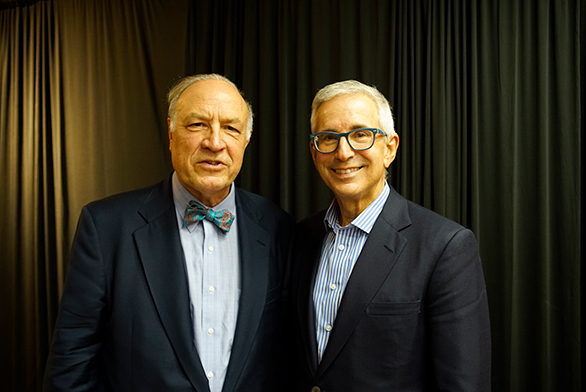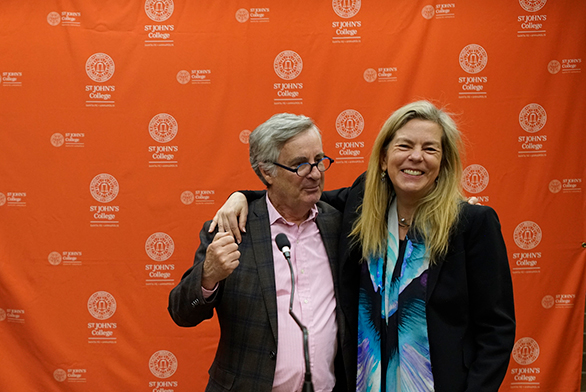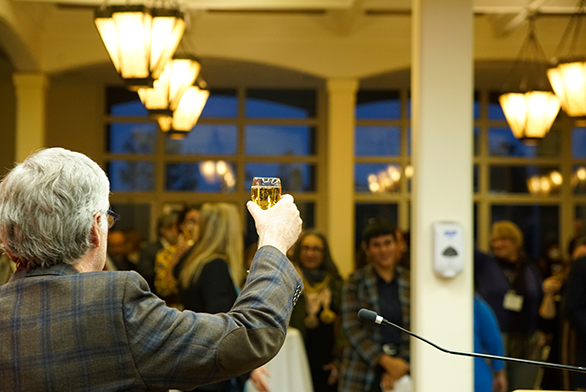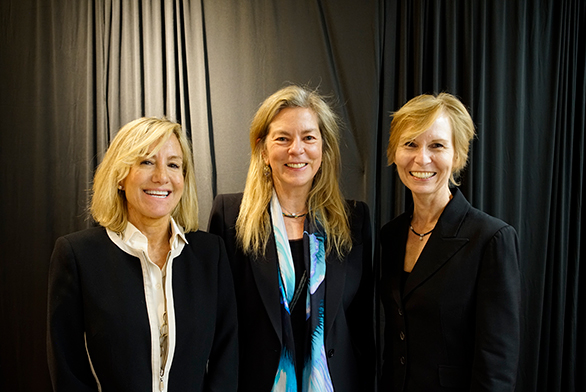St. John’s Surpasses $300 Million Campaign Goal and Aims Even Higher

The characteristically serious St. John’s community can belt out a robust “Hoorah!”
Thanks to alumni and friends, St. John’s has swept past the $300 million goal for the Freeing Minds campaign—months ahead of the campaign’s scheduled conclusion on June 30, 2023.
“Everyone who contributed to this campaign has made a world of difference for the college, for its future,” says member of the Board of Visitors and Governors (BVG) and chair of the Campaign Steering Committee Warren Spector (A81), who describes the outpouring of support as confirmation that St. John’s College offers “an education people believe in.”
Freeing Minds is a philanthropic achievement unmatched in St. John’s history. The campaign total currently stands at $320 million; by comparison, the college’s most successful prior campaign, which ended in 2008, raised $133 million.
More than two-thirds of donations come from St. John’s graduates, and the campaign’s success is built on gifts of all sizes. A $50 million matching gift from the Winiarski Family Foundation is the largest single gift ever given to the college, but more than 96 percent of all donations are $5,000 or less. Significantly, 2,700 donors to Freeing Minds made their first gift ever.

“This is amazing. We are a small college, and we did this during a pandemic, in which people’s lives were brought back to essential elements,” says board chair Ronald Fielding (A70). “It is lucky for us that so many regard St. John’s as essential.”
Santa Fe President Mark Roosevelt says it is important for the St. John’s community to understand why these funds are so necessary to the preservation of the college. “Higher education finances have changed dramatically. More than 850 colleges have closed in the past two decades, and many small liberal arts colleges are in a precarious place. Why? Because today’s college students have fewer resources than generations past. Because of that, revenue from students has declined precipitously; in fact, St. John’s receives $10 million less from students every year than we did fifteen years ago.”
Colleges must replace those lost dollars with a steady stream of annual gifts and larger endowment draws. Those who cannot do so, says Roosevelt, “will close or struggle mightily.” The Freeing Minds campaign was designed to shift St. John’s, out of both commitment and necessity, from a tuition-based model to one centered on philanthropy. When the college reduced tuition by one-third in 2018, it eliminated a decade of price increases and reinforced the message that a transformational St. John’s education is on offer to all who seek it.
That message was essential to reversing the college’s decade-long enrollment decline and will be even more essential in the coming years as colleges face what is known in higher education as the “demographic cliff and shift.” The population of college-age students will shrink by an estimated 15 percent, and students will continue to have fewer financial resources.

“Small liberal arts colleges, with very few exceptions, face substantial challenges,” explains Spector. “There’s a strain on resources, and students need more support than they ever have.”
The impact of the Freeing Minds campaign is already evident. In the years since the campaign launch, the college has eliminated a structural deficit, achieved a balanced budget, and seen applications rise to historic levels.
Of the $160 million that has been received by the college to date, $80 million was used to increase financial aid, cover past years’ operating deficits, and add more student support, including a summer bridge program for new students. Another $80 million was added to the St. John’s Endowment to build the college’s philanthropy-centered financial model. Other gifts—especially estate gifts and multi-year pledges—will continue to build the endowment, steadily reducing the role of tuition in the annual budget.
“The campaign is meeting two critical objectives: immediate needs and funding an enlarged endowment that will meet needs for generations to come,” says Fielding.
To sustain the momentum generated by Freeing Minds and build on the campaign’s achievement, the college is embracing a new “stretch goal” of $325 million—to be met by the campaign’s original closing date.

Specifically, the additional $5 million dollars will be used to further strengthen the college’s student support services and help meet the $25 million Pritzker Challenge, a matching gift from the Jay Pritzker Foundation that contributes $1 for every $2 gift made in support of much-needed renovations on on the two beautiful and historic campuses of St. John’s.
New Annapolis president Nora Demleitner says she is grateful to have joined a community that understands what it takes to support students in today’s world. She says, “I want to express my gratitude for your support of what we do at the college. It is an expensive educational model: small classes taught by full-time faculty on two campuses. But every dollar you invest in us is worth it. We offer a unique education that allows our students to thrive. We have earned our place in American higher education, and thanks to you, we have made tremendous progress in the last seven years. Please help us continue to thrive and serve as a model for liberal education.”

